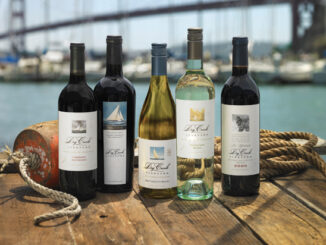
Do you know which country produces the most wine? The answer is Italy followed by Spain, which is followed by France, then comes the United States which is followed by of all places, China. There was a time in the world of wines where to be knowledgeable you had to be a polyglot, a speaker of many languages. The wine lover had to learn foreign words and places to have any idea what they were buying. Terms such as Trokenbeerenauslese (German), Amarone (Italian), Eger (Hungarian), Clos (French), Rioja (Spain), and on and on and on ad infinitum (Latin) had to be learned.

The opening of the United States as a major wine consuming after World War II, a time when Americans became more cosmopolitan and the domestic wine industry “grew up, “ changed all of that. Foreign producers were almost forced to change their labels so as to be more comfortable for American wine buyers. Today the foreign words are still there but the American wine buyer has become familiar with them so they are no longer mysterious or formidable.
I recently had an opportunity to sample some of the wines from Spain by Beronia, a top Spanish producer of some very nice wines and would like to call them to your attention.
Beronia 2016 Rioja Crianza ($14.99). This wine has been made from the indigenous Tempranillo grape with small amounts Garnacha and Mazeulo grapes blended in making for a pure all Spanish grape wine. The Beronia Rioja Crianza is a fine example of a Rioja wine but with an interesting turn on aging. The wine was aged in barrels made of American oak staves and a French oak top for 12 months, producing a wine that displays an aroma that is heavy with oak and just a hint of pepper and vanilla. The flavor stresses fresh cherries and hints of ripe blueberries with oak and vanilla in the background. The finish is about as dynamic as is the aroma and presents a very interesting finish to a very interesting wine.

Beronia Rioja 2014 Reserva ($19.99). A different style of the same grapes as the Crianza but the Reserva has been aged in mixes oak barrels for twenty months. The extra barrel aging imparted greater depth and an impressive softness to the wine. After the aging in the cask, the wine was bottled and given another eighteen months of aging. This bottle aging, at ideal temperature and humidity conditions results in a wine of great depth, flavor, and an impressive softness. Both the Aroma and the flavor is that of the black summer fruits with hints of tobacco, pepper, and vanilla. The Beronia Rioja 2014 Reserva is a wine that proves that, without any doubt, that the Spanish wines have truly come of age and are of world class.
Secastilla 2014 Garnacha ($21.99). Garnacha or as we know it Grenache, is rarely presented as a red wine but usually is made as a rosé. While most of us are familiar with the characteristics of a Grenache rosé, this wine is in a world by itself. The flavors and aromas usually associated with a rosé are replaced by all of the attributes that on seeks in a well made red wine. There are layers upon layers of fruit and berry aromas backed up by the very obvious cherry that is coupled with chocolate and mild oak and what seems to be a suggestion of cedar. One of this wines most outstanding feature is its soft and inviting velvety texture, which was derived from the aging both in the cask and an even longer aging in the bottle. The finish is like the other Beronia wines are exceptional in its presentation of chocolate and cherry in the finish that lingers on the palate seemingly forever. It is very rare to fine, well made very interesting wine that is truly worth more than its price.


